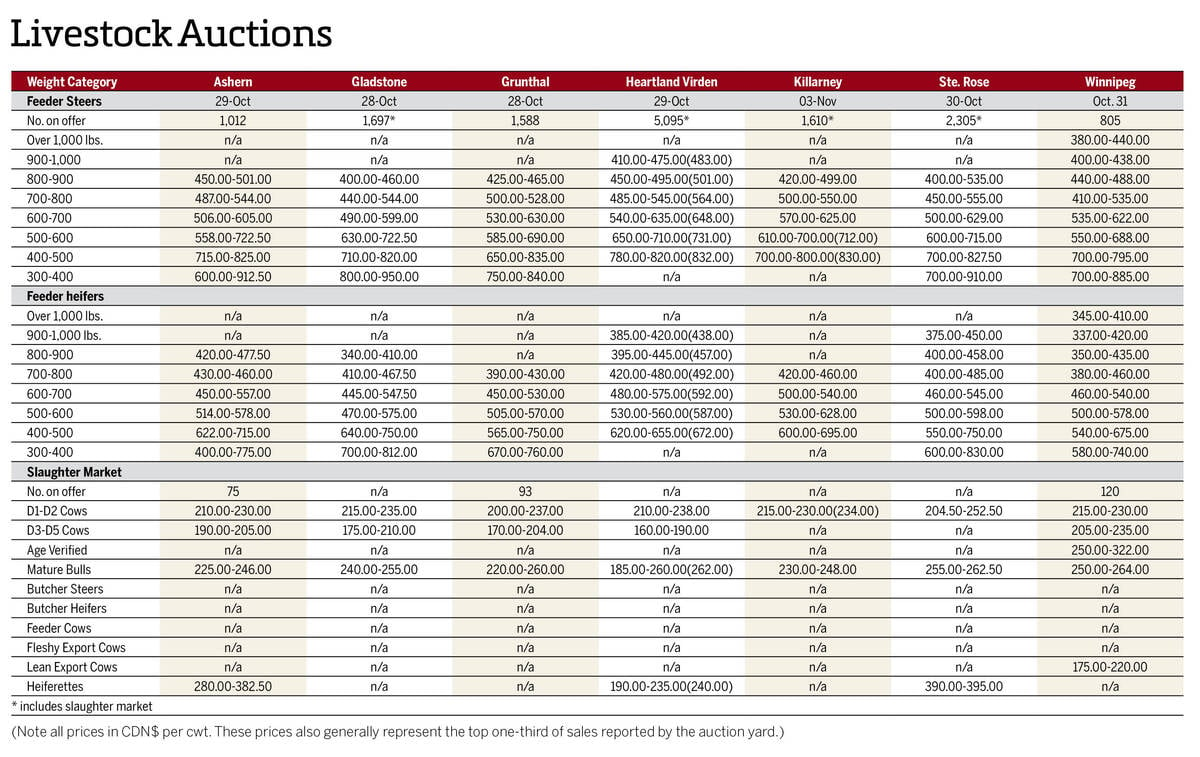In the TV game show Deal or No Deal, contestants pick briefcases in hopes of winning big cash prizes.
The rules are simple, with an unseen ‘banker’ offering deals as the contents of the cases are slowly revealed. Will the contestant take a deal? Or will they risk it all by opening more cases in hopes of a bigger deal?
The Howie Mandel-hosted program first aired in North America in 2005, but the concept originated in the Netherlands in 2000 and versions have been produced in dozens of countries.
Read Also

Manitoba cattle prices, Nov. 4
Manitoba cattle sale prices for the week of Oct. 28 to Nov. 4, 2025.
Black Sea grain deal
Grain markets were grappling with a ‘deal or no deal’ question of their own for the first half of May, with corn and wheat futures in particular finding strength from the uncertain staying power of the Black Sea Grain Initiative that has allowed Ukrainian grain to move through the Black Sea for a little over a year.
The deal was already extended twice but was set to expire on May 18. Russia appeared to be taking a hard line and looking for concessions that Ukraine was unwilling to give. A last-minute deal was struck that basically kicked the can down the road for 60 days.
Ukrainian agricultural products will continue to move through the Black Sea until mid-July, when the “will they/won’t they” rhetoric will likely pick up steam again.
An estimated 30.3 million tonnes of grain have already moved from Ukraine as part of the deal, including 15 million tonnes of corn and eight million tonnes of wheat, according to United Nations data. The deal is seen as important for global food security but does put some pressure on North American prices.
U.S. debt crisis deal
The seemingly perennial U.S. debt ceiling crisis was at the forefront of financial markets once again, with Republicans and Democrats on Capitol Hill at odds over what to do about the situation.
If the debt ceiling isn’t raised or another solution isn’t found, the U.S. government could start defaulting on its debt sometime in July. Optimism that a deal might be reached was enough to send crude oil prices higher in mid-May, while also weighing on the safe-haven U.S. dollar internationally.
Developments in energy and currency markets can have major influences on agricultural markets, which means traders will follow any news of a possible deal — or no deal — very closely.
Export deals
On a day-to-day fundamental basis, export sales of grains and oilseeds are followed closely for signs of demand. Who’s buying? How much are they buying and at what price?
However, many deals already on the books are turning into ‘no deals’ as buyers look to the looming North American new crop and the chance of lower costs.
For the week ended May 11, the U.S. Department of Agriculture reported net cancellations of wheat and corn deals originally slated to move in 2022-23. Some, but not all, of that moved to the new-crop ledger. Old-crop soybeans also saw large cancellations, although the net result was slightly positive.
More cancellations of all commodities are likely in the weeks ahead, which will weigh on prices, especially if crops in the U.S. and Canada get a good start.















